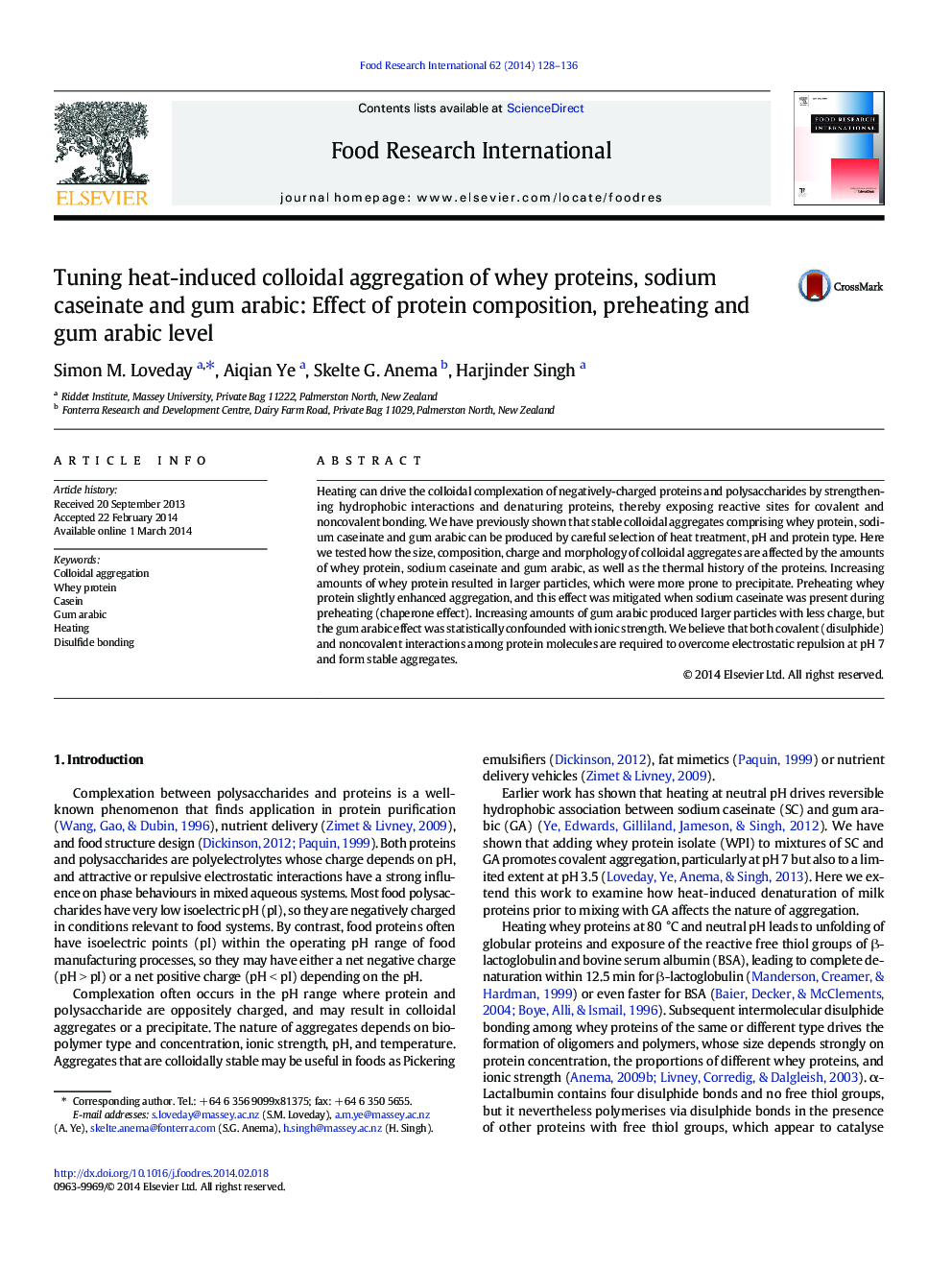| Article ID | Journal | Published Year | Pages | File Type |
|---|---|---|---|---|
| 6395760 | Food Research International | 2014 | 9 Pages |
â¢Whey protein forms heat-induced colloidal aggregates with gum arabic and casein.â¢More whey protein and less casein produce larger aggregates.â¢More gum arabic produces larger aggregates with lower charge.â¢Aggregate size can be tuned by selecting ratios of components.
Heating can drive the colloidal complexation of negatively-charged proteins and polysaccharides by strengthening hydrophobic interactions and denaturing proteins, thereby exposing reactive sites for covalent and noncovalent bonding. We have previously shown that stable colloidal aggregates comprising whey protein, sodium caseinate and gum arabic can be produced by careful selection of heat treatment, pH and protein type. Here we tested how the size, composition, charge and morphology of colloidal aggregates are affected by the amounts of whey protein, sodium caseinate and gum arabic, as well as the thermal history of the proteins. Increasing amounts of whey protein resulted in larger particles, which were more prone to precipitate. Preheating whey protein slightly enhanced aggregation, and this effect was mitigated when sodium caseinate was present during preheating (chaperone effect). Increasing amounts of gum arabic produced larger particles with less charge, but the gum arabic effect was statistically confounded with ionic strength. We believe that both covalent (disulphide) and noncovalent interactions among protein molecules are required to overcome electrostatic repulsion at pHÂ 7 and form stable aggregates.
